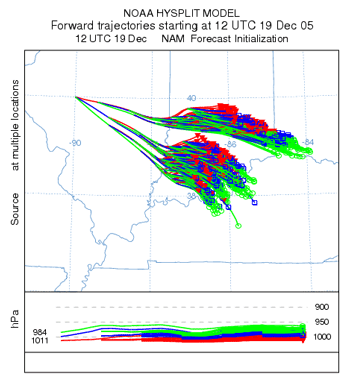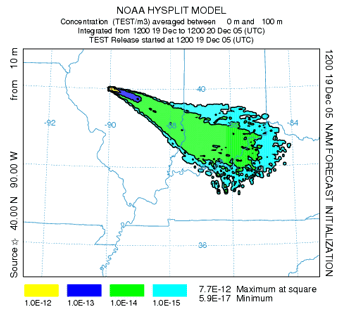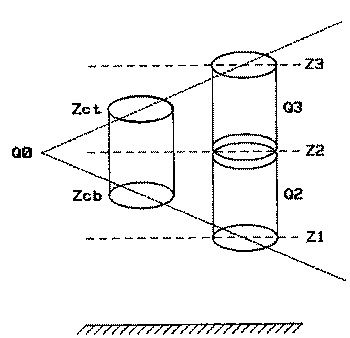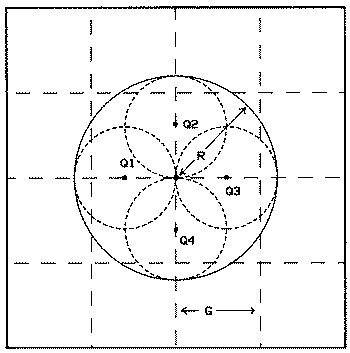Trajectories versus Concentration Plumes |
|||
 Previous |
 Next |
|
|


An hourly animation of the particles used to create the figure on the right can viewed by clicking HERE.
Particle: The element (particle) is a point mass of contaminant. A fixed number of particles are released. They are moved by a wind having mean and random components. They never grow or split.
Puff: The element is a fully 3-D cylindrical puff (see figure below left), having a defined concentration distribution in the vertical and horizontal. Puffs grow horizontally and vertically according to the dispersion rules for puffs, and split if they become too large.
Hybrid: The element is a circular 2-D object (planar mass, having zero vertical depth), in which the horizontal contaminant has a “puff” distribution (see figure below right). There are a fixed number of these in the vertical because they function as particles in that dimension. In the horizontal dimension, they grow according to the dispersion rules for puffs, and split if they get too large.
 Illustration of how a single particle (Q0) splits due to vertical diffusion into two particles Q2 and Q3. |
 Illustration of how a single particle with radius R splits due to horizontal diffusion into four particles (Q1, Q2, Q3 and Q4) each with radius R/2. |
 Previous |
 Next |